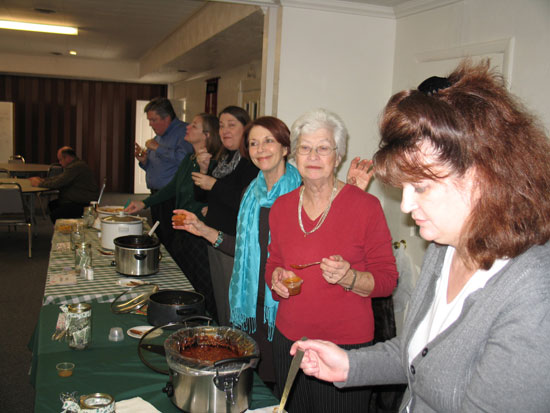This Lent, we shall be changing the service music from the “Willan” setting written in the 20th century by Healey Willan, organist/choirmaster of the Anglican Church of St. Mary Magdalene in Toronto, to the “Merbecke” setting, written in the mid-16th century by London organist, composer, and scholar John Merbecke.
The setting was created for the First Prayer Book in the Anglican Church, that of King Edward VI. It fell into disuse after Queen Mary I ascended to the throne; but regained popularity during the Victorian era. In the Episcopal Church, throughout most of our lifetimes, the Willan setting has been the most commonly used for Ordinary Time. The Merbecke setting has been most widely used in Lent and Advent, owing to its somber and austere style. Where Rite I is still the norm, this remains the case today.
When Archbishop Thomas Cranmer asked John Merbecke to provide service music for the new prayer book in 1549, he specified that it was to be simple and able to be sung by everyone. He admonished Merbecke that there was to be “for every syllable only one note.” Cranmer wanted the people to have no excuse for not participating in the Liturgy. This Lent, we want to encourage your full participation as well. To that end, you will find links to audio files for three pieces from the Merbecke setting (Kyrie, Sanctus, and Agnus Dei) to help you learn or recall this music, as you may have need.
| [wpaudio url=”http://stmarks-music.s3.amazonaws.com/kyrie.mp3″ text=”Listen to the Merbecke Kyrie” dl=”0″] |
| [wpaudio url=”http://stmarks-music.s3.amazonaws.com/sanctus.mp3″ text=”Listen to the Merbecke Sanctus” dl=”0″] |
| [wpaudio url=”http://stmarks-music.s3.amazonaws.com/agnus_dei.mp3″ text=”Listen to the Merbecke Agnus Dei” dl=”0″] |
John Merbecke was born around 1510; but nothing else is known of him until 1531 when he appears on the roster of men employed to sing with the boy choristers at St. George’s Chapel in Windsor Castle. He began his service there in the court of Henry VIII, during that time when the Church of England was being established as separate from the Church of Rome.
He was appointed organist of St. George’s in 1541. Two years later, his fortunes took a turn for the worse. The Church of England was becoming aggressive in its efforts to protect the English people from both the errors of Rome and those of the emerging European Protestants. Merbecke, however, could not resist collecting and reading the writings of the radical new Protestant thinkers, particularly John Calvin. In 1543, he was found to be in possession of such material. Along with two colleagues at St. George’s, he was arrested, charged with heresy, and condemned to death by burning at the stake.
Stephen Gardiner, the Bishop of Winchester, pleaded Merbecke’s case before the King Henry VIII, and he received a reprieve. Released from the Tower, Merbecke returned to his post at St. George’s where he remained during the reigns of Edward VI, “Bloody” Mary I, and Elizabeth I until his death in 1585.
John Merbecke shares a feast-day in the Anglican/Episcopal calendar on November 21 with two of his contemporaries. One is Thomas Tallis who, as music director for the Chapel Royal, went “on the road” with final four Tudor monarchs when they were not “at home” in Windsor Castle. The other is William Byrd who served as organist for the Chapel Royal through the Elizabethan era.






 On February 6, 2011, seven confirmands were welcomed into the life of the Church by Bishop James M. Stanton and the congregation of St. Mark’s. Bishop Stanton’s sermon: “Why are you here… why are you in the world? We believe that God created us all, in some way or other. But we live most of the time with serious questions about who we are, and why we’re here, and what it all means, and how can I know? We are strangers to ourselves. You know, that’s a good thing…”
On February 6, 2011, seven confirmands were welcomed into the life of the Church by Bishop James M. Stanton and the congregation of St. Mark’s. Bishop Stanton’s sermon: “Why are you here… why are you in the world? We believe that God created us all, in some way or other. But we live most of the time with serious questions about who we are, and why we’re here, and what it all means, and how can I know? We are strangers to ourselves. You know, that’s a good thing…” 